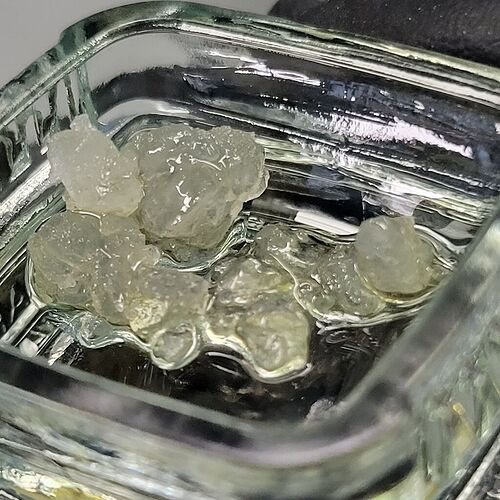Hey all, was hoping to get some expert opinions on this. I’ve searched for other posts similar, but aside from notes on sparging product for various conversions and reactions, I haven’t seen anything on sparging for solvent removal.
Quick background, I’m operating a licensed facility in Ohio. For various reasons, which I can’t quite wrap my head around, Ohio does not allow R&D testing (as in no, I cannot send a sample out for a residual solvent test or a potency test outside of the State Mandated Final Form Testing for cannabis products).
If you fail on a residual solvent test, well, you’re fucked. You are allowed to have the original sample retested. IF that sample, which already failed, somehow passes, then your bulk sample (which is not allowed to have been remediated or further purged (scouts honor on that one I guess), must be sampled by a different lab, which must pass for your sample to be cleared for sale or any further use. If any of the additional tests results in a failure (over 5000ppm) then the batch must be destroyed. Seriously. I’m not going to get into why a failure for residual solvent requires destruction rather than just another little bit of time in the vac oven, but it is what it is. I know the whole thing is dumb, but I’ve long passed on trying to figure out why some of our rules are what they are. All I can do is operate in compliance and hope things get better soon (hopefully the state reads my numerous emails asking for this to change, but I’m not holding my breath).
Now this hasn’t been an issue for me before, honestly 5000ppm is easy to hit, and for most of our extracts we’re averaging ~100ppm (max) on our RST.
However, we are doing quite a bit more live resin vapes lately, which for my process I fully separate the HTE from the THCa before purging them separately, and then decarbing the THCa. With the HTE layers, well, it’s tough. I’m trying to walk a fine line with not over-purging, which even with running a cold trap to minimize terpene loss still results in a loss of terpenes and some level of denaturing of the terpenes even running an inert gas backfill into my ovens.
Normal process: After fully crashing out the HTE, it’s poured off through a filter into a wider pyrex dish. low and slow vacuum purge at low heat with a few very gentle stirs throughout the process. Eventually work up to 20hg generally over the course of a few days, then one hard vac pull to see if we’re getting any major bubbles, repeat until sample is looking stable. In other states, I’d send it off for a quick RST and be good to go, since that’s not an option here we’re just hoping for the best, so I’m over purging rather than risk a failure on a batch, and it’s costing me a lot of very nice terps even with my multistage coldtrap in place.
We’re having good results w/ very clean diamonds and sauce with this method:
However, I have had a failure for RST on a batch of liquid live. ~5200ppm (on the HTE) but had to destroy a whole batch, super unhappy about that, as you could imagine. Don’t know what happened, just a swing and a miss on my end. Thought it was purged, but clearly it wasn’t. What made it worse was the sample re-run from the first lab came back at 3200ppm, then the second lab sample came back at just over 5k, so we have to destroy it all.
Moving forward:
What I want to look into, and see if anyone has any suggestions or ideas, is sparging the HTE sample. My hope is that by bubbling up either food grade nitrogen, argon, or (suggested by the testing lab chemist) helium, through the HTE sauce layer in a longer column, I can get the trapped hydrocarbons to diffuse out of the solution quicker and more effectively than I can simply relying on vacuum and gentle heat. Now, while I would normally not get on here and ask to be spoon fed knowledge (apologies!) most of my process development options are being restricted. Remember up above about the limitations on testing? Yeah I can’t exactly send out samples to gather data on solvent removal rates, effectiveness of various gasses, etc… since any failure results in a destruction of the whole batch. Including the diamonds. Since they’re part of the same batch.
So I’m hoping one of y’all might at least be able to clue me in if I’m on the right track here, or have some helpful inputs for me on this one to point me in the right direction. Anyone tried this/currently doing this/gave up on it entirely?
Thanks in advance, y’all rock!
